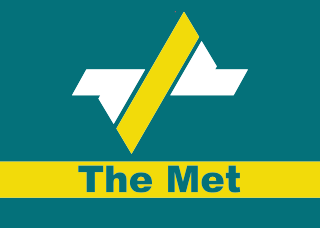Related Research Articles
Technical and further education or simply TAFE is the common name in English-speaking countries in Oceania for vocational education, as a subset of tertiary education. TAFE institutions provide a wide range of predominantly vocational courses.

Traralgon is a town located in the east of the Latrobe Valley in the Gippsland region of Victoria, Australia and the most populous city in the City of Latrobe and the region. The urban population of Traralgon at the 2021 census was 26,907. It is the largest and fastest growing city in the greater Latrobe Valley area, which has a population of 77,168 at the 2021 Census and is administered by the City of Latrobe.

Seymour is a town located in the Southern end of the Goulburn Valley in the Shire of Mitchell, Victoria, Australia and is located 104 kilometres (65 mi) north of Melbourne. At the 2021 census, Seymour had a population of 6,569. The township services the surrounding agricultural industries as well as the nearby military base of Puckapunyal, which is an important training centre for the Australian Army. Other important sectors of employment in Seymour include retail, light engineering, agricultural services support, medical services, and education.
VicRoads is a government joint venture in the state of Victoria, Australia. In the state, it is responsible for driver licensing and vehicle registration. It is owned and operated through a joint venture between the Victorian government and a consortium made up of Aware Super, Australian Retirement Trust and Macquarie Asset Management.
The Melbourne and Metropolitan Board of Works (MMBW) was a public utility board in Melbourne, Australia, set up in 1891 to provide water supply, sewerage and sewage treatment functions for the city. In 1992, the MMBW was merged with a number of smaller urban water authorities to form Melbourne Water. MMBW was abolished in 1992.

The Public Transport Corporation (PTC) was a Victoria State Government owned statutory authority formed under the Transport Act 1983 which operated passenger and freight trains, trams and bus services.
Skills Victoria is the Victorian Government body that oversees Victoria's independent TAFE Institutes.

Education in Victoria, Australia is supervised by the Department of Education and Training (DET), which is part of the State Government and whose role is to "provide policy and planning advice for the delivery of education". It acts as advisor to two state ministers, that for Education and for Children and Early Childhood Development.
The Catchment Management Authorities (CMAs) were established in Victoria under the Catchment and Land Protection Act 1994. Originally known as Catchment and Land Protection Boards, the CMAs were changed to their present name in 1997.
As Australia's supply of freshwater is increasingly vulnerable to droughts, possibly as a result of climate change, there is an emphasis on water conservation and various regions have imposed restrictions on the use of water.

The ministries of Jamaica are created at the discretion of the prime minister of Jamaica to carry out the functions of government. As of 2016, the prime minister is Andrew Holness. The agencies of Jamaica are created by both parliamentary law and assigned to ministers to oversee. The governance structure consists of ministries with portfolios that have agencies that carry out its functions.
Robert Clive Fordham is an Australian former politician, who was a member of the Victorian Legislative Assembly representing the state seat of Footscray for the Labor Party from 1970 to 1992. He was Deputy Premier of Victoria in John Cain's government from 1982 to 1989.

Janet Elizabeth Rice is an Australian politician. She is a member of the Australian Greens and has served as a Senator for Victoria since 2014. She was a co-founder of the Victorian Greens and also served on the Maribyrnong City Council from 2003 to 2008, including a term as mayor.

The Government agencies in Bangladesh are state controlled organizations that act independently to carry out the policies of the Government of Bangladesh. The Government Ministries are relatively small and merely policy-making organizations, allowed to control agencies by policy decisions. Some of the work of the government is carried out through state enterprises or limited companies.
The Department of Economic Development, Jobs, Transport and Resources (DEDJTR) is a former department of the Government of Victoria. It was created on 1 January 2015 by the government of Premier Daniel Andrews when the number of government departments was reduced from 9 to 7, and assumed responsibility for ministerial portfolios previously spread across 5 departments. It was abolished at the end of 2018 and divided into two new departments.
Water management in Victoria deals with the management of water resources in and by the Australian State of Victoria.
References
- State of the Public Sector In Victoria 2016-2017 (PDF). Melbourne: Victorian Public Sector Commission. March 2018. Retrieved 7 March 2019.
![]() This article incorporates text by the State of Victoria (Victorian Public Sector Commission) available under the CC BY 4.0 license.
This article incorporates text by the State of Victoria (Victorian Public Sector Commission) available under the CC BY 4.0 license.
